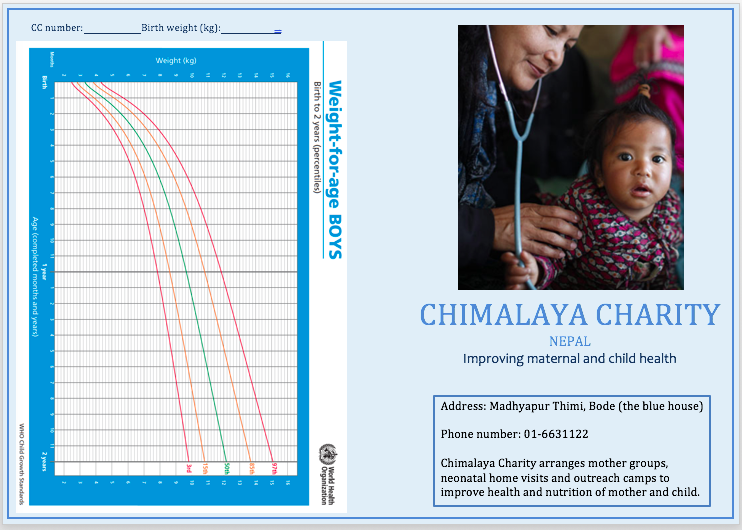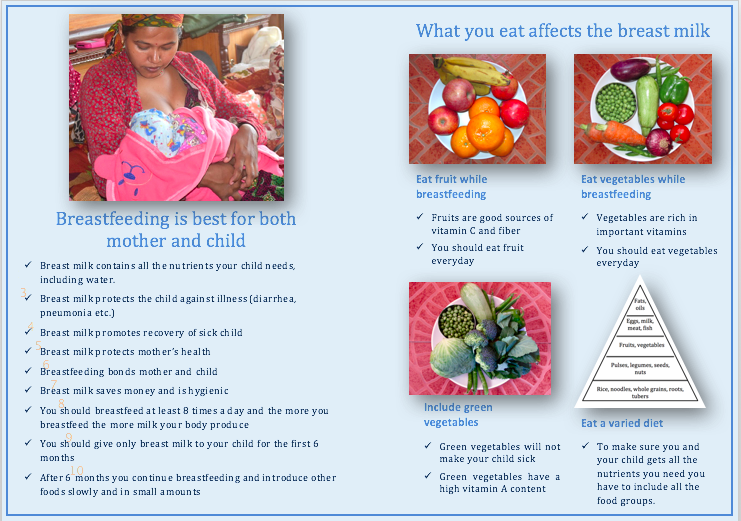By Andrea Jensen Moth and Liv-Unni Priestley
This post pertains to our student placement LEARNING OBJECTIVE 2: provide sufficient and understandable information to the mothers about breastfeeding and maternal nutrition.
KEY STRATEGY: Create a pamphlet to give to the mothers at home visits.
One of the big issues regarding baby/maternal health in the postnatal period in Nepal is the lack of information and guidance. After giving birth and returning from the hospital the women get no mandatory and regular follow ups or the opportunity to join maternity groups like we do in Norway. This is what Chimalaya Charity aims to provide for the mothers.
To help provide basic information about the importance of breastfeeding and a good and balanced maternal diet, we made an information pamphlet to be handed out at neonatal visits. There were two main areas we wanted to address with the information.
1: Promote exclusive breastfeeding for six months. Many women we have talked to explain that they don’t think they have enough milk, and that the baby needs the bottle in addition to breastmilk. This is a repeating problem and we do our best to explain that breastfeeding on demand increases the production. For information on breastfeeding we used the WHO guidelines and in cooperation with Dr. Manju decided to simplify the language for the pamphlet to make sure the mothers would understand.
2: The Bhaktapur area is mainly inhabited by people from the Newari caste. In this culture there are several food taboos for pregnant and lactating women. The believes are that both mother and baby can get ill from eating certain fruits and vegetables. It is important to provide information to the mothers and the mothers-in-law, who often takes care of the women in the postnatal period, that these believes are not correct. The information must be easy to understand and culturally sensitive.
The pamphlet is in the process of being translated to Nepali, after some minor adjustments suggested by Anne Marie Worning, former head of WHO’s team on public health, now also engaged in Chimalaya Charity’s work. In addition to the information, Dr. Manju wanted us to add the WHO’s growth charts for boys/girls up to two years, weight for age, so that the mothers as well as the team from Chimalaya Charity can use the pamphlet as a monitoring card for their child.

